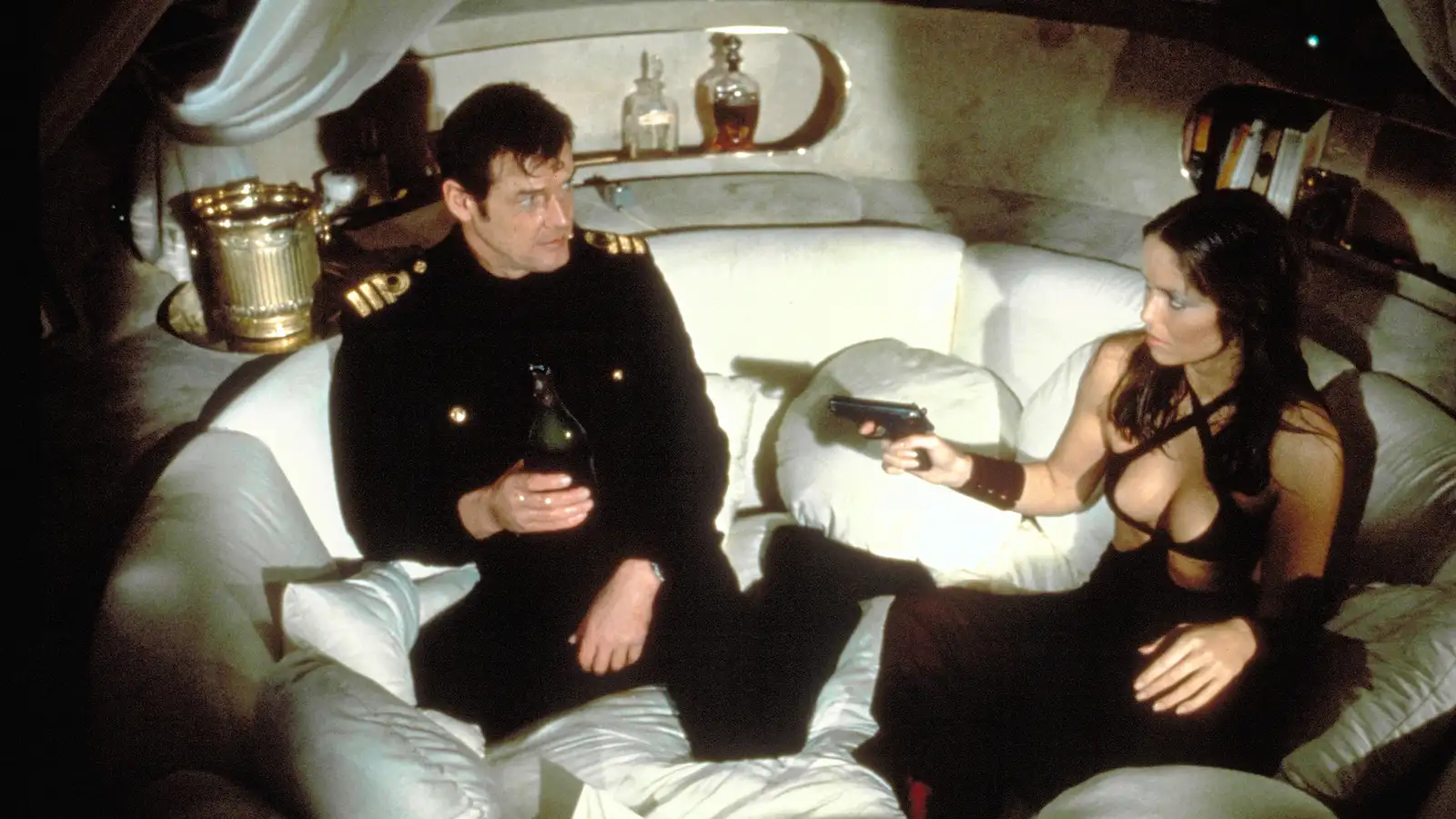When I was a 10-year-old girl, I had three things in common with my 17-year-old brother: A deep devotion to Queen, a spectacular social awkwardness, and a love of James Bond films.
At one point in the mid-1990s, we watched all the Bond films available to us over consecutive weekends, a useful marker for evaluating the seduction and sniper skills of Sean Connery, George Lazenby (briefly), Roger Moore, Timothy Dalton, and early Pierce Brosnan. My favorite was Roger Moore, who died today at age 89. Moore was best-known for playing Bond with a deft humorous touch.
But I also loved the badass actresses Moore frequently went up against—many of whom were every bit his match in their command of language and weaponry. Unfortunately, they often wound up being physically manhandled by Bond or wasted by the film’s directors, who would dispatch them (often to their deaths) after a few bedroom sessions. For a brief moment, though, they were as good as Bond, if not better.
Moore played Bond the longest of any actor, from 1973 to 1985, at a time when the feminist movement was hitting its stride in the West. So it’s not surprising that, during Moore’s stint as Bond, franchise producers started to introduce strong female characters. Here are a few classic moments when Bond women were allowed to have the upper hand over 007:
Major Anya Amasova in The Spy Who Loved Me (1977)
It’s almost impossible to watch this movie without rolling your eyes at some of the patronizing, corny dialogue directed at KGB Agent “XXX.” But actress Barbara Bach, like most women had to do in the 1970s, doesn’t let Bond’s barbs distract her from the job at hand.
When the pair try to escape Bond’s nemesis, Jaws, Bond criticizes Bach for her driving skills. “Women drivers,” he sighs. “Quiet! Watch this,” she retorts, before reversing and slamming Jaws into a wall. “Shaken, but not stirred.” (Even that one garnered a mini-eye roll from Moore.)
Dr. Holly Goodhead in Moonraker (1979)
Moore’s understated expression of surprise when he realizes ”Dr. Goodhead” is not a man, but a woman, is well-returned by the exasperated look from actress Lois Chiles, who plays the NASA astrophysicist and astronaut Holly Goodhead. “Your powers of observation do you credit, Mr. Bond,” she says in a tone so dry it’ll have you reaching for water.
Bond ultimately discovers that Dr. Goodhead is an undercover CIA agent, and together they defeat a genocidal villain—a great moment for women that is followed up by an out-of-this-world zero gravity bedroom session. (Goodhead’s astronaut training finally came in handy.)
Amasova and Goodhead were the first attempts by the Bond franchise to put women on a more equal footing with Bond, writes Robert Caplan in Shaken & Stirred: The Feminism of James Bond. “Both characters belong to a unique sorority within a sorority,” Caplan writes. “They represent the franchises first conceptions of a viable and sustainable feminist counterpart to its male protagonist.”
Melina Havelock in For Your Eyes Only (1981)
Carole Bouquet plays the role of a Greek crossbow-toting marine biologist motivated by revenge after her parents are killed. She is also the master of the unflinching, icy stare. “Out of my way James,” she says, delivering him a look that could freeze time. “All right,” Bond capitulates.
Octopussy in Octopussy (1983)
The only Bond girl to have her name in a film’s title, Octopussy, played by Maud Adams, is a smuggler and head of an all-female cult. (“Sexual discrimination,” Bond cries upon finding out. “I will definitely have to pay it a visit.”)
“Octopussy powers the narrative of perhaps the most feminine Bond movie,” Mark O’Connell, author of Catching Bullets: Memoirs of a Bond Fan, told Variety in 2015. “With her émigré palace, lush steam train and private circus, she’s one of the strongest women in the series.” Adams was also the only actress to appear in three Bond films, having played Andrea Anders, also alongside Moore, in 1974’s The Man With the Golden Gun and as an extra in 1985’s A View to a Kill.
May Day in A View to Kill (1985)
Grace Jones memorably played the deadly bodyguard of the film’s psychotic villain, Max Zorin (Christopher Walken). With her intense stare and zany costumes, May Day, the head of a group of all-female assassins, was notable for being a rare, exceptionally powerful Bond girl. (The film’s tagline was: “Has James Bond finally met his match?) Jones inhabited the role with such intensity, she said in her memoir, that even Moore was intimidated.
